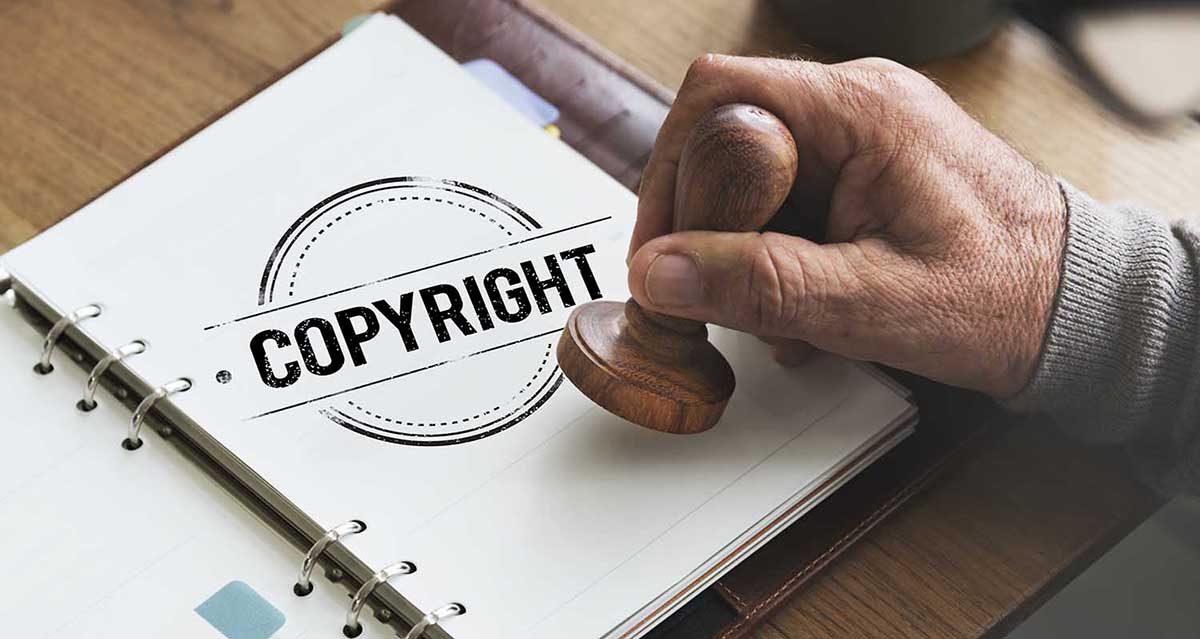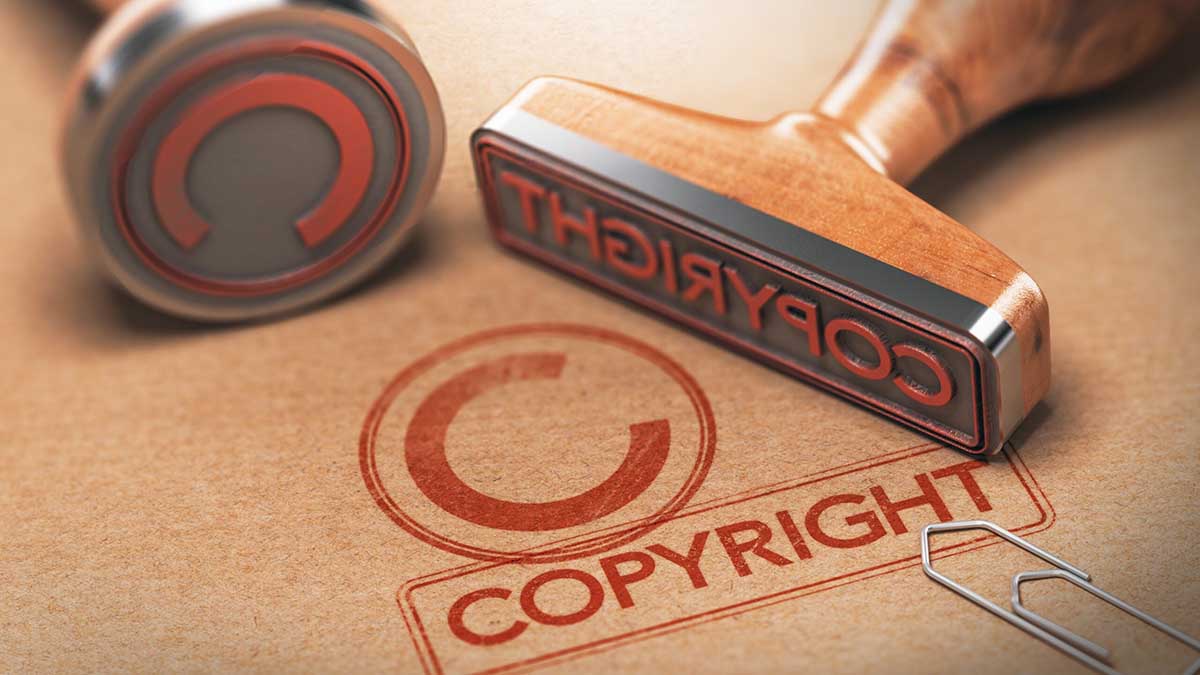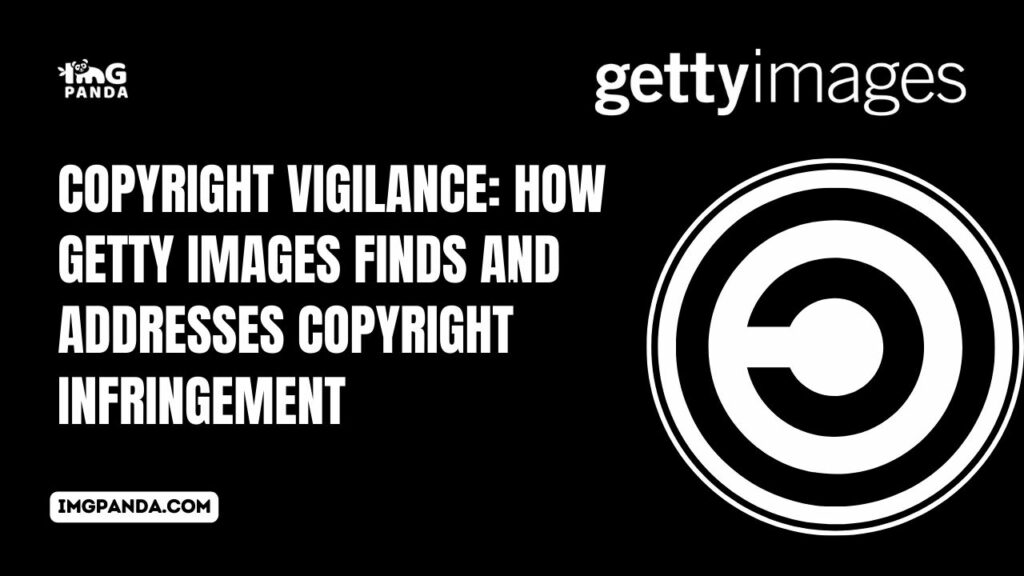In today's digital landscape, the concept of copyright infringement is more pertinent than ever. It refers to the unauthorized use, reproduction, or distribution of copyrighted material without the permission of the copyright holder. This can include images, videos, music, written content, and other creative works. Copyright infringement not only undermines the rights of creators and content owners but also poses significant legal and financial risks.
In the digital age, where content can be easily accessed, shared, and manipulated online, the importance of copyright protection cannot be overstated. Copyright laws serve as a crucial mechanism for safeguarding the rights of creators, incentivizing creativity, and ensuring fair compensation for intellectual property. Without adequate protection, creators may be discouraged from producing new works, leading to a stifling of innovation and artistic expression.
One prominent player in the realm of copyright protection is Getty Images. As a leading provider of stock photography, videos, and other visual content, Getty Images plays a pivotal role in protecting copyrights and enforcing intellectual property rights. Through its extensive collection of licensed content and robust enforcement efforts, Getty Images helps to combat copyright infringement and uphold the rights of creators and content owners worldwide.
In this blog post, we will delve into the intricacies of copyright infringement, explore the importance of copyright protection in the digital age, and examine Getty Images role in safeguarding copyrights. By understanding these key concepts, we can gain insights into the challenges and opportunities associated with protecting intellectual property in today's digital landscape.
Understanding Copyright Infringement:

Copyright infringement encompasses the unauthorized use, reproduction, distribution, or adaptation of copyrighted material without the permission of the copyright holder. It violates the exclusive rights granted to the copyright owner under copyright law and can result in legal consequences, including monetary damages and injunctions.
In the digital realm, copyright infringement takes various forms, including:
- Unauthorized Use: When copyrighted material, such as images, videos, or music, is used without obtaining the necessary permissions or licenses from the copyright owner.
- Reproduction: Making copies of copyrighted works, whether in whole or in part, without permission from the copyright holder.
- Distribution: Sharing or distributing copyrighted material to others without authorization, such as posting images or videos online without the creator's consent.
- Adaptation: Creating derivative works based on copyrighted material without the copyright owner's permission, such as remixing music or creating fan art.
Copyright infringement can have significant repercussions for creators and content owners:
- Loss of Revenue: Unauthorized use or distribution of copyrighted material deprives creators of potential revenue streams, as they are not compensated for their work.
- Diminished Market Value: Widespread infringement can devalue copyrighted works by flooding the market with unauthorized copies, reducing the demand for legitimate copies.
- Damage to Reputation: Copyright infringement can tarnish the reputation and credibility of creators and content owners, undermining their authority and professionalism.
- Legal Risks: Copyright infringement exposes infringers to legal risks, including lawsuits, injunctions, and monetary damages. Content owners may pursue legal action to enforce their rights and seek compensation for damages incurred.
In summary, copyright infringement poses significant challenges and risks for creators and content owners in the digital age. By understanding the forms and impacts of infringement, stakeholders can take proactive measures to protect their intellectual property and enforce their rights under copyright law.
Also Read This: The Best Stock Image Websites for Finding Unique and High-Quality Photos
Getty Images Approach to Copyright Protection:

Getty Images has developed a proactive approach to copyright enforcement, leveraging a combination of technologies, tools, and collaborations to identify and address copyright infringement effectively.
- Overview of Getty Images Proactive Approach:
- Getty Images prioritizes copyright protection and takes proactive measures to enforce intellectual property rights.
- The company employs a dedicated team of professionals tasked with monitoring and addressing instances of copyright infringement.
- Technologies and Tools Used by Getty Images:
- Getty Images utilizes advanced technologies and digital tools to monitor online platforms and detect instances of copyright infringement.
- Automated algorithms and image recognition software are deployed to identify unauthorized uses of Getty Images content across the internet.
- These tools enable Getty Images to efficiently identify infringing content and take prompt action to address violations.
- Collaborations with Legal Teams and Copyright Authorities:
- Getty Images collaborates closely with legal teams and copyright authorities to enforce intellectual property rights and pursue legal action against infringers.
- The company maintains partnerships with law firms specializing in intellectual property law to assist in legal proceedings related to copyright infringement.
- Getty Images works with copyright authorities and industry organizations to share information, coordinate enforcement efforts, and advocate for stronger copyright protection measures.
By employing a multi-faceted approach to copyright protection, Getty Images demonstrates its commitment to safeguarding the rights of creators and content owners. Through the use of advanced technologies, collaborations with legal experts, and proactive enforcement strategies, Getty Images strives to combat copyright infringement and promote a fair and sustainable digital ecosystem for creative content.
Also Read This: No Watermark, No Problem: Shutterstock Secrets
Detecting Copyright Infringement:
Getty Images employs various methods to detect copyright infringement online, combining automated tools with manual monitoring processes to identify unauthorized uses of images effectively.
- Automated Detection:
- Getty Images utilizes advanced algorithms and image recognition technology to scan the internet for instances of copyright infringement.
- These automated systems analyze metadata, image attributes, and visual patterns to identify matches between Getty Images content and unauthorized reproductions.
- When a potential infringement is detected, the system generates alerts for further review by Getty Images enforcement team.
- Manual Monitoring:
- In addition to automated detection methods, Getty Images relies on manual monitoring by a team of trained professionals.
- Content specialists and copyright enforcement experts review alerts generated by automated systems and conduct in-depth investigations to verify potential infringements.
- This manual review process allows Getty Images to assess the context of each instance of alleged infringement and determine the appropriate course of action.
Real Case Example:
- In 2020, Getty Images discovered that a prominent online retailer was using several images from its collection without proper licensing or attribution. The retailer had incorporated the images into product listings and promotional materials without obtaining the necessary permissions.
- Getty Images automated detection system flagged the unauthorized use of the images, prompting further investigation by the enforcement team.
- Upon verification of the infringement, Getty Images issued a formal cease and desist letter to the retailer, demanding the immediate removal of the infringing content and seeking compensation for damages.
- The retailer complied with Getty Images demands, removing the infringing images from its website and agreeing to pay a settlement fee to resolve the copyright infringement claim.
This case illustrates how Getty Images combines automated detection technology with manual monitoring and enforcement efforts to identify and address instances of copyright infringement effectively. Through proactive detection and swift action, Getty Images protects the rights of creators and content owners while promoting respect for intellectual property in the digital ecosystem.
Also Read This: 10 Creative Ideas for Professional Photographers to Use Flickr
Addressing Copyright Infringement:
Getty Images employs a range of strategies to address copyright infringement cases, including legal actions, cease and desist letters, DMCA takedown notices, and collaborative efforts to resolve disputes amicably.
- Legal Actions:
- Getty Images may pursue legal action against infringers who persistently violate copyright laws or refuse to comply with takedown requests.
- Legal proceedings may include filing lawsuits for copyright infringement, seeking injunctions to halt further unauthorized use of copyrighted material, and pursuing damages for financial losses incurred.
- Cease and Desist Letters:
- Getty Images often initiates the enforcement process by sending cease and desist letters to infringers, demanding the immediate cessation of unauthorized use of copyrighted content.
- These letters serve as formal notices of infringement and provide infringers with an opportunity to rectify their actions before legal action is pursued.
- DMCA Takedown Notices:
- Getty Images utilizes the Digital Millennium Copyright Act (DMCA) takedown process to request the removal of infringing content from online platforms.
- Upon discovering instances of copyright infringement, Getty Images submits DMCA takedown notices to the hosting providers or platforms where the infringing content is hosted.
- Hosting providers are legally obligated to remove or disable access to the infringing material in response to valid DMCA takedown notices.
- Collaboration with Infringers:
- Getty Images may engage in collaborative efforts with infringers to resolve copyright disputes amicably and reach mutually beneficial agreements.
- This may involve negotiating licensing arrangements, settlement agreements, or other resolutions to address the unauthorized use of copyrighted material.
- Collaboration with infringers allows Getty Images to protect its intellectual property rights while minimizing legal costs and preserving business relationships.
By employing a combination of legal, enforcement, and collaborative measures, Getty Images effectively addresses copyright infringement cases and upholds the rights of creators and content owners. These efforts contribute to the promotion of a fair and sustainable digital ecosystem where intellectual property rights are respected and protected.
Also Read This: How to Find and Use Royalty-Free Music for Your Videos
Challenges and Limitations:
Getty Images faces several challenges and limitations in its efforts to combat copyright infringement, including technological constraints, legal complexities, and evolving trends in digital content consumption. Despite proactive enforcement measures, addressing infringement remains an ongoing challenge for the company.
- Technological Limitations:
- Automated detection tools may not always accurately identify instances of copyright infringement, especially in cases where images have been modified or manipulated.
- The proliferation of digital content across various online platforms makes it challenging to monitor and enforce copyright consistently.
- Legal Complexities:
- Copyright laws and regulations vary across jurisdictions, posing challenges for enforcement efforts in different regions.
- Legal proceedings can be time-consuming and costly, particularly in cases involving international infringement or complex legal issues.
- Evolving Digital Landscape:
- Rapid advancements in technology and changes in consumer behavior contribute to new forms of copyright infringement, such as unauthorized sharing on social media platforms and emerging technologies like deep learning and artificial intelligence.
- Keeping pace with these developments requires continuous adaptation and innovation in enforcement strategies.
Strategies for Overcoming Challenges:
- Enhanced Technology:
- Invest in the development of advanced detection technologies, such as machine learning algorithms and image recognition software, to improve accuracy and efficiency in identifying copyright infringement.
- Collaboration and Partnerships:
- Forge partnerships with industry stakeholders, technology providers, and legal experts to share resources, expertise, and best practices for combating copyright infringement.
- Collaborate with online platforms and hosting providers to streamline the process of issuing DMCA takedown notices and enforcing copyright on third-party websites.
- Education and Awareness:
- Educate content creators, consumers, and businesses about the importance of copyright protection and the consequences of infringement.
- Provide resources and guidelines for proper licensing and usage of copyrighted material to promote compliance and respect for intellectual property rights.
- Advocacy and Policy Initiatives:
- Advocate for stronger copyright protections and enforcement measures at the legislative and regulatory levels, both domestically and internationally.
- Work with government agencies, industry associations, and advocacy groups to address legal and policy challenges related to copyright infringement.
By adopting a multi-faceted approach that combines technological innovation, collaboration, education, and advocacy, Getty Images can overcome challenges and improve its efforts to protect copyrights in the digital age. These strategies can help ensure a fair and sustainable ecosystem for creators, content owners, and consumers alike.
Also Read This: The Power of Twitter Chats: How to Participate and Build Your Following
Impact of Copyright Vigilance:
Getty Images proactive copyright protection efforts have a significant impact on various stakeholders, including creators, content owners, consumers, and the broader digital ecosystem. Here are some key aspects of this impact:
- Positive Outcomes:
- Getty Images enforcement actions lead to the removal of infringing content from online platforms, protecting the rights of creators and content owners.
- By deterring unauthorized use and distribution of copyrighted material, Getty Images helps maintain the integrity and value of creative works in the digital marketplace.
- The enforcement of copyright laws promotes a level playing field for content creators and contributes to a fair and sustainable ecosystem for intellectual property.
- Deterrent Effect:
- Getty Images vigilant enforcement efforts send a clear message to potential infringers about the consequences of copyright infringement.
- The risk of legal action, financial penalties, and damage to reputation serves as a deterrent, discouraging individuals and businesses from engaging in unauthorized use of copyrighted material.
- This deterrence effect contributes to greater compliance with copyright laws and fosters a culture of respect for intellectual property rights.
- Support for Creators and Content Owners:
- Getty Images copyright protection initiatives provide crucial support for creators and content owners in safeguarding their intellectual property.
- By actively monitoring for copyright infringement and taking enforcement actions on behalf of rights holders, Getty Images relieves creators of the burden of policing their own work.
- This support empowers creators to focus on their craft and pursue their creative endeavors with confidence, knowing that their rights are being protected and enforced by a trusted partner.
In summary, Getty Images copyright vigilance has a tangible and positive impact on the digital ecosystem, promoting respect for intellectual property rights, deterring infringement, and supporting creators and content owners in their creative pursuits. By upholding the principles of copyright protection, Getty Images plays a vital role in fostering a thriving and equitable environment for creativity and innovation.
Also Read This: How to Split an Image into 90 Degrees for Instagram?
FAQs
How does Getty Images detect copyright infringement?
Getty Images uses a combination of automated tools, such as image recognition technology, and manual monitoring by trained professionals to detect copyright infringement online.
What actions does Getty Images take against infringers?
Getty Images may take legal action, issue cease and desist letters, and submit DMCA takedown notices to address copyright infringement. The specific actions taken depend on the severity of the infringement and the response of the infringing party.
Can I use Getty Images' content for free?
Getty Images offers a wide range of licensing options for using its content, including free and paid licenses. However, unauthorized use of Getty Images' content without proper licensing constitutes copyright infringement and may result in legal consequences.
How do I report copyright infringement to Getty Images?
If you believe your copyright has been infringed upon using Getty Images' content, you can report the infringement through Getty Images' website or contact their copyright enforcement team directly.
What should I do if I receive a copyright infringement notice from Getty Images?
If you receive a copyright infringement notice from Getty Images, it is important to take prompt action to address the issue. This may involve removing the infringing content, contacting Getty Images to resolve the matter, or seeking legal advice if necessary.
Can I dispute a copyright infringement claim from Getty Images?
If you believe you have been wrongly accused of copyright infringement by Getty Images, you have the right to dispute the claim. You can provide evidence to support your case and engage in discussions with Getty Images to resolve the dispute amicably.
How can I license content from Getty Images for commercial use?
To license content from Getty Images for commercial use, you can visit their website and search for the desired images or contact their licensing team for assistance. Getty Images offers a variety of licensing options to suit different needs and budgets.












